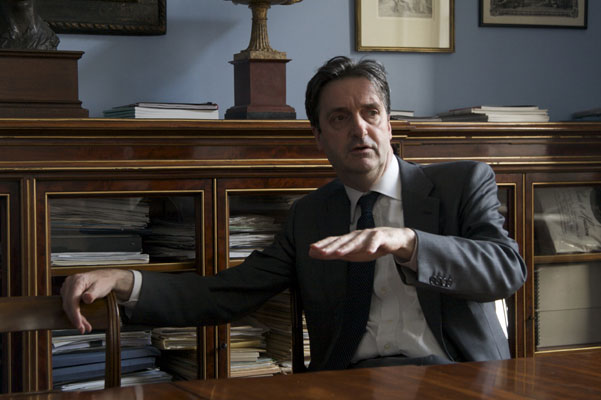| Picture: Amazon |
This is an excellent study of the context for one of the supreme masterpieces of the Renaissance, the great fresco cycle begun by Masaccio and Masolino and completed by Filippino Lippi. Here is where I disagree: "the Brancacci Chapel and its stupendous, incomparably beautiful decorative programme add up to something less than the sum of their parts unless both are treated as the property of everyone who had a stake in their fortunes or belonged in some way to the Carmelit culture responsible for their existence" (p. 207). Of course to understand context we need to understand it in the round; that much is truism. But I think something stronger is implied about our ability to appreciate the frescoes, and there I'm less sure. I think they stand as stupendous works of art even if you don't know their context. I was fascinated to learn more about the circumstances of the Chapel's creation and use, but I'm not sure it has much shifted my appreciation of it as a work of art. Looking at it another way, this study could have been written about an utterly forgettable and minor fresco cycle without looking very different. There isn't much here about the artistry of the chapel.
I don't mean to criticise attention to context; this book takes a different approach, and I think it's a profitable one. But for a book length study to neglect so much the artistic aspects of the fresco cycle is to lose something. The one part that I thought unforgivable was his failure to address the consequences of an aggressively thorough cleaning that many, including myself, think enormously damaging to the frescoes. Eckstein mentions it only in passing, and always uncritically.
It also strikes me that despite its bent towards the historical rather than the art historical, this book remains rather speculative. "Understanding how they may have spoken to ordinary Florentines ... requires something more than another look at these sensationally beautiful images. It requires sustained analysis of a range of factors influencing the ways contemporary men and women approached, regarded and used the Chapel, and of impressions and associations it may have triggered in their minds at different times", Eckstein tells us (p. 19). "Associations it may have triggered" in fifteenth century minds must remain speculative, and I thought more consideration of methodology would have been profitable in that context. And as Eckstein himself mentions, they were a rich source for later artists (famously including Michelangelo), whose reaction is more likely to have been admiration for sensationally beautiful images before appreciation of their Carmelite context.
I've accentuated my critical thoughts about this book, because Grumpy. But despite my frustrations, I enjoyed and profited from it, and I do commend it. Eckstein discusses the pictorial programme in relation to the Carmelite order, and has a particularly interesting chapter on 'the Miracle of Anghiari' as a context for the Brancacci Chapel, when Saints Peter and Paul intervened to save the Florentines. I find the contextual and historical stuff fascinating, and I learned a lot from this thoroughly researched and well written study.
 |
| Picture: Amazon |
T.G. Otte The Foreign Office Mind: The Making of British Foreign Policy, 1865-1914 Cambridge University Press 2011 £22.99
Brilliant diplomatic history told through the eyes of the foreign office. Otte's narrative of British foreign policy is interspersed with an account of the office politics within the tiny and often seriously underfunded foreign office. I found it illuminating, particularly as the establishment grappled with new challenges on continental Europe and Britain's post-Napoleonic hegemony was revealed as increasingly tenuous. The narrative structure downplays theories and ideas and focuses on process rather than structure, but it would be impossible to address every dimension in a single study.
Otte concludes that diplomats "were not the Wooster-ish types that stride along the corridors of power in the pages of popular fiction or in certain forms of popular history", referencing "most egregiously" Niall Ferguson's The Pity of War (p. 394). I enjoyed the disparaging reference to that flimsy celebrity. And I appreciated the nuanced picture of British diplomacy that emerges from this masterful study.
 |
| Picture: Amazon |
Dominic A. Pacyga Chicago: A biography University of Chicago Press 2009 £16
I found this book too unspecific and sometimes banal: "the use of machinery to cut costs would provide a key element of the Industrial Revolution" (p. 41), and "The nature of the continuing Industrial Revolution and the world market system shifted regional, national, and even international relationships" (p. 82). Its strategy is to give some macro-level background in broad strokes, and then illustrate in the context of Chicago.
It's good on class and ethnic tension, but again it was too much a journalistic account of local manifestations of regional, national and even international phenomena. I'd particularly like to have seen more on planning issues, which are touched on but not analysed effectively. The book reads well and has some interesting material, but lacks analytic heft.
| Picture: Amazon |
Joanna Merwood-Salisbury Chicago: The skyscraper and the modern city University of Chicago Press 2009 £35
This is much better; a book that takes a more specific theme but draws out wider implications. Merwood-Salisbury quotes from Landau and Conduit's history of the skyscraper: "The skyscraper building type owes its existence and much of its character more to the desire for money and prestige, to advances in technology, and to adventures in real estate speculation than to abstract ideals or theories of style or aesthetics" (quoted p. 4). This gets to the nub of the problem, but doesn't answer it well. The quotation sets out to refute a view that no one holds (has anyone really claimed that skyscrapers exist due to abstract aesthetic theories?). The common view is that they are build for exclusively financial reasons, but interestingly the quotation undermines that view by lumping together two things that must be separated - money and prestige. The two are not natural bedfellows. The most profitable building might not be the most prestigious. The question that struck me on visiting Chicago is why their skyscrapers are stunning - why have developers there chosen to spend extra money on beautiful rather than merely functional buildings? In London few skyscrapers are beautiful. The overwhelmingly dominant form is the ugly boxy glass stump.
The book takes history and historical ideas seriously, but doesn't neglect the micro-level technical factors that shaped the Chicago skyscraper, such as the use of terra cotta tiles to clad the steel-framed buildings, giving opportunity for decoration, and the use of white glazed tiles in interior courtyards to improve the quality of light in interiors. I found the small details like this fascinating.
Merwood-Salisbury's deadpan style is not always appropriate to her material. I laughed at this unintentionally funny passage: "The desire for a worldwide uprising of workers was antithetical to the local architects' belief in the development of a harmonious western society out of the acclimatization of different races. For the anarchists, a new society would arrive not through evolution but through revolution" (p. 31). At a time when anarchists were bombing and assassinating and assorted socialists and communists were credibly agitating for social transformation, calling them 'antithetical' to architects seems somewhat insufficient, even if it is a relevant observation in context.
Later she writes of Louis Sullivan: "His principal task was to create an architecture that expressed the triumph of business and technology over forces that threatened to destabilize the city. His design for the tall office building was a political manifesto about the fractious relationship between art and labor, and ultimately about the future of industrial society and its governance" (p. 38). She goes to to compare his clad steel-framed buildings as akin to political banners on parade. No doubt there was a political aspect to Sullivan's buildings, but returning to her own opening quotation that is not the primary purpose of the skyscraper, and Merwood-Salisbury sometimes indulges in a degree of rhetorical excess, trying too hard to link the sykscraper to its social and political context in 1890s Chicago. But despite the excesses, this is a first rate study that I found one of the most illuminating books on Chicago.
I greatly enjoyed Kate Summerscale's Mrs Robinson's Disgrace: The private diary of a Victorian Lady (Bloomsbury 2013 £7.99), a micro history of a sensational Victorian divorce trial, rich with soap-operaesque material"the idea that certain kinds of writing were dangerous - especially to young women - was commonplace (p. 116-7) finds uncomfortably close parallel in the 'trigger warnings' that proliferate on university campuses today. The contrast of social mores then and now is compelling, although I thought The Idle Woman piqued my interest; her review here.
Later she writes of Louis Sullivan: "His principal task was to create an architecture that expressed the triumph of business and technology over forces that threatened to destabilize the city. His design for the tall office building was a political manifesto about the fractious relationship between art and labor, and ultimately about the future of industrial society and its governance" (p. 38). She goes to to compare his clad steel-framed buildings as akin to political banners on parade. No doubt there was a political aspect to Sullivan's buildings, but returning to her own opening quotation that is not the primary purpose of the skyscraper, and Merwood-Salisbury sometimes indulges in a degree of rhetorical excess, trying too hard to link the sykscraper to its social and political context in 1890s Chicago. But despite the excesses, this is a first rate study that I found one of the most illuminating books on Chicago.
 |
| Picture: Amazon |






